
Buffy: Young Blood
Cinematographer Michael Gershman finds the right light for both a teenage heroine and evil hordes of the undead on the WB series Buffy the Vampire Slayer.
This article originally appeared in AC June 1999
Unit photography by Byron J. Cohen and Richard Cartwright.
The great thing about Buffy is that there are absolutely no rules,” declares director of photography Michael Gershman with delight. “Do I want to overexpose something five stops? Sure. Do I want to underexpose something to the point where you almost don’t know it’s there? Sure.”
Gershman has served as director of photography on a half-dozen television series, but none of them allowed him the freedom he exercises every week on Buffy the Vampire Slayer, the cult favorite that’s about to enter its fourth season on the WB television network. “The nature of the [subject matter] gives me more freedom with the lighting,” he explains. “We are in a world where there are vampires and monsters — and high school students.”
Set in the fictional town of Sunnydale, California — a typical suburban community, except for the fact that it’s built atop a Hellmouth, a mythical porthole where all the demons of the netherworld have converged — the show revolves around Buffy (Sarah Michelle Gellar), a high school student whose pre-ordained mission in life is eradicating the undead creatures who run amok every evening after the sun sets. Of course, trying to balance a normal high school life with saving the world is no picnic. “Buffy is your basic horror-comedy-action-drama series,” jokes show creator Joss Whedon. “It’s theme is basically the pain of adolescence, magnified to the point where it becomes genuinely horrific and also genuinely comical.”
Naturally, the show needed a visual style that would reflect its mix of genres and emotions. For the daytime “reality” world, in which the kids attend high school and engage in typical teenage activities, Gershman fashioned a bright, colorful landscape. For night-time sequences he shifted to a dark, edgy, textured look, replete with deep blacks and bold slashes of frequently colored light.
While formulating the show’s visual look, Whedon and his director of photography screened Luc Besson’s action thriller La Femme Nikita (shot by Thierry Arbogast, AFC) and Joel Schumacher’s post-modern vampire romp The Lost Boys (Michael Chapman, ASC). “The colors in those films popped very brightly — not in a comic-book style, but in an arresting way that didn’t look cheap,” says Whedon. “I wanted deep blacks and an eerie beauty that would service both the horror [of the dark side] and the kind of ethereal beauty of it.”
“I love the dark. It represents the unknown.”
— director of photography Michael Gershman

The fact the series was shot in 16mm during its first two seasons had a big impact on Gershman’s approach. “It’s hard to get depth with 16mm,” he observes. “It tends to flatten everything out, so one of the early lighting concepts I came up with was to create depth in the frame. If I put a cool light in the background, a warmer one in the middle and a different color light on the actors, the frame doesn’t look quite as flat.
“16mm also tends to keep everything in focus; the lenses don’t fall off the way they do in 35mm. That was a problem for me, because I often want to isolate a person or object so the audience will focus on that one point. With 35mm, depth is naturally built into the frame; with 16mm you have to move the camera back and use a longer lens to get that illusion. Frequently, there just isn’t room on the set.”
Last season, Gershman was given the go-ahead to switch to 35mm, but the change didn’t affect the program’s stylish look. “I have always liked Michael’s footage,” says Whedon. “He can give you a beautiful Sarah and a hideous demon in the same light.”
The only downside to changing formats was that Gershman had to give up using Vision 320T 7277 because the 35mm version of the stock was more expensive than the 16mm incarnation. Given a choice, he prefers the 320T — “the grain is a little tighter and the color saturation is a little different” — but says he is able to achieve substantially the same look with Kodak’s EXR 5298 and 5293 stocks.
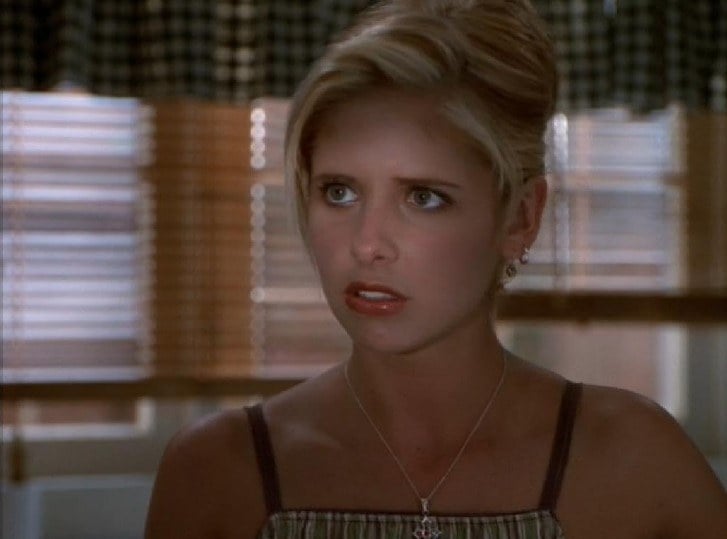
One of Buffy's trademarks is the use of backlight, a lesson Gershman picked up during the early days of his career, when he was working as a camera assistant for Néstor Almendros, ASC on Days of Heaven. Gershman’s philosophy of lighting was shaped by his work with Almendros, as well as stints with such other ASC greats as Haskell Wexler and Vilmos Zsigmond. The Los Angeles native got into cinematography via animation, working as an animation cameraman before segueing into live-action aerial photography. A few too many close calls in helicopters convinced Gershman to remain on terra firma. The cinematographer then worked on a variety of television projects with Richard C. Glouner, ASC before a recommendation led him to the gig on Days of Heaven. While operating, Gershman worked frequently with Zsigmond (The River, Table for Five), Laszlo Kovacs, ASC (Shattered, Say Anything), and Andrzej Bartkowiak, ASC (Nuts, Falling Down).
Gershman became a fully-fledged director of photography in 1990 on the NBC series Shannon's Deal, and has worked almost exclusively in television since. His other credits include the series Middle Ages, Moon Over Miami and Courthouse.
Gershman testifies that he has great fun on Buffy. “I love the dark,” he reports with a smile. “It represents the unknown.” His characters are always going in and out of shadows, often with just a slice of light to illuminate them. “I love to top the light, bring it down and take it off of foreheads. Sometimes I’ll cut it all the way past the eyes and just leave a little slash on a cheek or neck and keep the rest of the face [a bit] darker. I use semi-transparent toppers, [diffusing] either with 216, 250 or Opal, depending upon the intensity of the light. Just a little highlight on the face makes the face a lot more interesting to look at.”
“At first the show didn’t really appeal to me. It was going to be shot on 16mm and was about a vampire slayer named Buffy!”
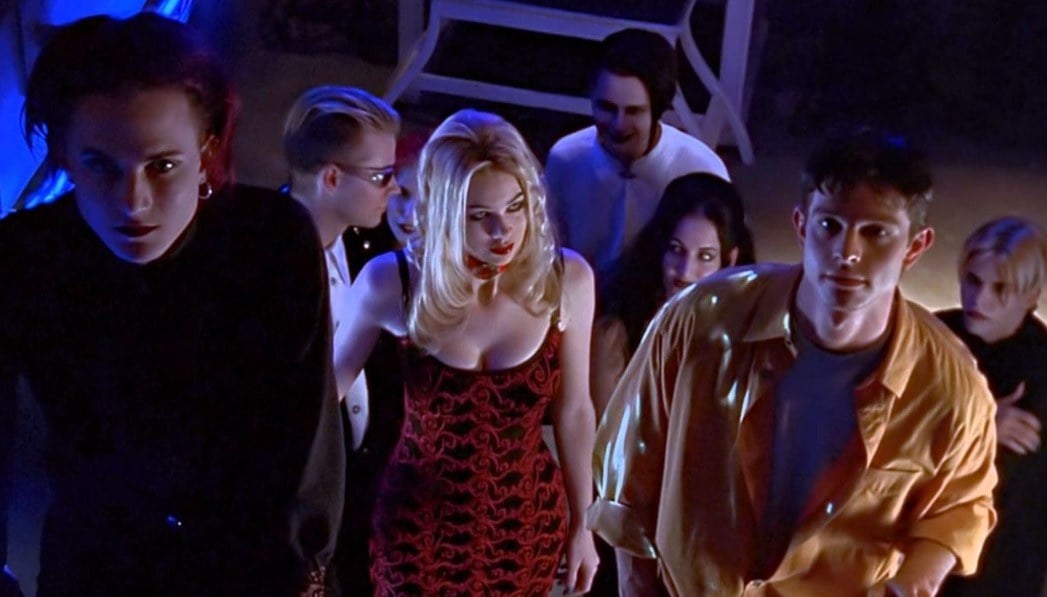
He also likes to focus his light sources through objects in order to create patterns. A generous selection of cucalorises is always nearby, and he has been known to stack chairs one atop another to produce curious angles of light through chair legs. For one recent scene set at the fictional Sunset Club, where teens who fantasize about being vampires hang out, electricians hung two Vari-Lites, computer-controlled lamps typically used during concerts and for music videos. True to its name, the Vari-Lite creates variegated patterns, and can be programmed to change not only the pattern but also the color, focus and intensity of the lighting.
During AC’s set visit, the Sunset Club was bathed in an ethereal blue light, courtesy of the Vari-Lites and a row of blue Neons which ring one side of the room. The Neons served as the predominant lighting fixtures, and Gershman corrected the other lamps so they’d be a similar shade of blue. On the opposite side of the set, the cameraman placed an Arri 650-watt lamp colored with a ¼ straw. “By warming it up, I’m able to play the contrast of the blue,” he notes. Leikos and Pars were then hung from the ceiling to enhance the highlights. Four-by-four inch cutouts were also put into the Leikos to create patterns.
A catwalk constructed of metal grates bisects the upper level of the club. There, daylight-balanced Kino Flos were aimed up through the grating, augmenting the blue cast already established. Standing on the catwalk, Buffy and another student were illuminated from below. “This is where she finds out he’s a bad guy,” says Gershman of the scene. “I played the light pattern on him because he’s a bad guy, but I didn’t use it so much on her. I kept her pretty pure and clean.”
Many cameramen avoid lighting from below, but on Buffy it helps create the sense of foreboding and impending danger which is so integral to the show. In one episode, a young boy sits alone on a jungle gym late at night, waiting for his mother to pick him up from the playground. The scene opens with a shot of a merry-go-round, lit from underneath by Kino Flos fitted with daylight tubes. Gershman lit the jungle gym and nearby swings the same way. To add to the eeriness, he over-cranked the camera slightly, rendering the swings and merry-go-round in subtle slow-motion, as if commanded by an unseen force.
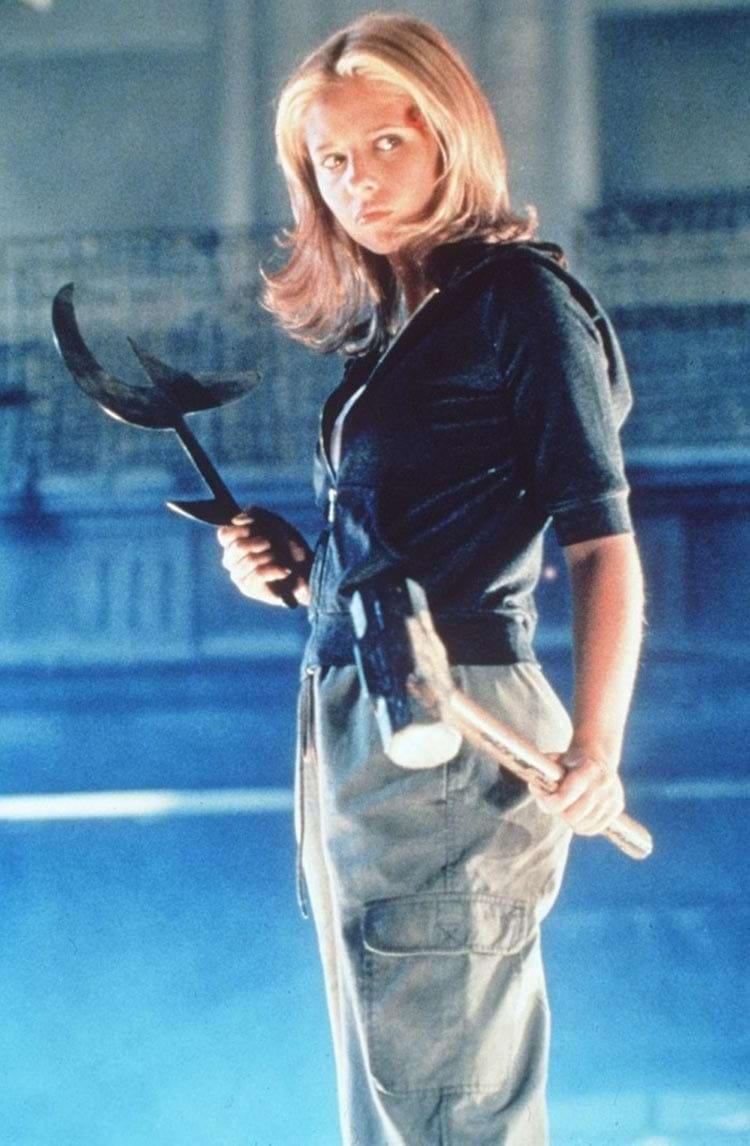
One of Gershman’s favorite episodes is “Anne,” in which Buffy and a friend find themselves trapped in a Hell-like environment. The ghoulish setting, accented with blue, yellow and white light, was created inside an abandoned newspaper plant (the old Herald Examiner in Los Angeles). “It was a fun area to light,” recalls Gershman. “We had these huge vats filled with water to simulate boiling cauldrons, and we put underwater Pars in them with yellow gels to give the water an iridescence. In addition, little rings of fire floated on the water.
“I wanted hot blue streaks sweeping through the area, so I used 4K Xenons,” he continues. “Electricians panned the lights manually. Given the size of the building and the time frame we had, it was impossible to light the entire interior, but I mounted Pars along the walls with spot globes in them so we could focus hot patches of light. The Pars were on a dimmer board, and we used Leikos to add extra patterns and lights.”
Leikos work especially well on the darker sets, enabling Gershman to keep the general area dark yet bring in a light pattern for a hot streak — without requiring flags to cut them. Arri 300- and 650-watt units are also ubiquitous on the set. “The 650s are my real workhorses,” he acknowledges. “I love them because they’re small but hot. They have a great Fresnel.”
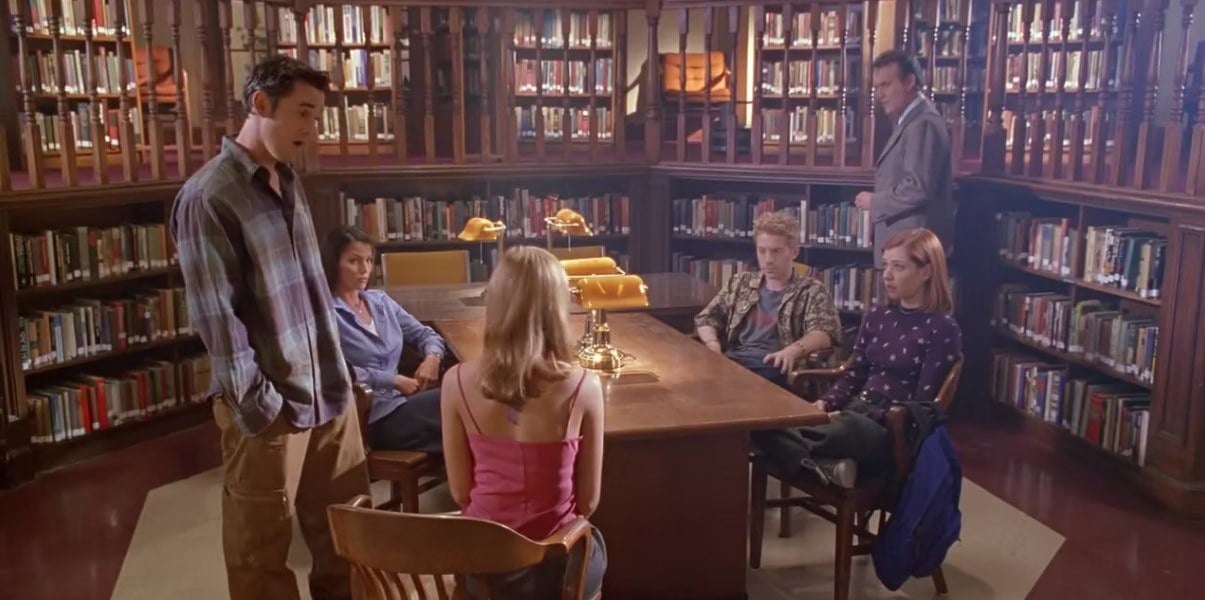
Gershman seldom uses front light, preferring to take backlight and wrap it around a person or object, using what he calls a “sissy card” (so named because actor Brad Johnson once asked Gershman, “How come I don’t get one of those sissy cards you use on women?”). The card, which he prefers over a standard bead-board bounce, has shiny silver or gold Roscoflex SS (3804) and G (3805) material over it, as well as a frilly curtain. Introduced to this technique by a local grip in North Carolina, Logan Berkshire, Gershman “buys different colored sheer curtains from J.C. Penney,” he explains. “I drape a curtain over the card, ruffle it up a little bit, and bounce a light into it. The Rosco material makes the card highly reflective, but when the light bounces back it doesn’t travel as far — it’s really soft and spread out, without spilling all over the room.”
When lighting from above, Gershman likes to use “turkey” coops — a customized hybrid of a chicken coop and a space light which uses IK FCM bulbs bounced internally off of Griffolyn or Roscoflex material and is fully collapsible — and teasers to help focus the light straight down. Since even very soft toplight can create shadows under the actors’ eyes, fill light is added.

Buffy shoots with two cameras, a Panavision Platinum and a GII, about 40 percent of the time, and a Steadicam operator is always available. Although Gershman shifts to prime lenses when light levels dictate it, he prefers using Primo 4:1 (14.5-75mm T2.3) and 11:1 (24- 275mm T2.8) zooms, treating them as variable-focal-length “prime” lenses. He likes to work between T2.8 and T4, explaining, “I think the lenses look good at those stops. You don’t carry too much depth of field and you get natural falloff.” When shooting outside, he’ll pop in neutral density filters rather than stop down the aperture.
Gershman frequently employs in-camera effects, such as frame-rate changes, which he accomplishes with a FTZSAC controller. With the FTZSAC, when the frame-rate is manipulated, the device automatically opens the aperture to compensate for exposure. This technique proved useful for an episode that found Buffy bursting into the school building and racing down a hallway toward the library in a vain effort to save another slayer from being killed. “She came in full speed, and then we ramped into slow motion as she ran down the hall,” recounts Gershman. “The audience already knows she’s too late. For that type of shot, we’ll start at a T5.6 at 24 fps to be able to ramp to 96 fps, ending at a T2.8.
The library and school hallway are two of a half-dozen standing sets (others include a classroom, the cafeteria, the school lounge, and Buffy's house). The library has a lot of wood and is dressed in warmer tones than the other sets, so Gershman keeps the light coming through the windows a bit cooler. To achieve this look, he uses 6K HMI Pars corrected with 3A CTS. “Daylight naturally tends to be a little bluer, so I like to correct the lights only part way,” he explains. “The ¾ CTS warms them up somewhat, but it still leaves them a little bit blue. If I want to play the scene late in the afternoon, I’ll go with a full CTO or CTS correction and then add another Vi or Vi CTS.”
The classroom set has 10Ks shining through each window, while Mole Pars, fitted with very hot Firestarter globes (also rigged outside the windows), cast highlights on the blackboard. Gershman also likes to bounce lights off the floor and tabletops. The science classroom has lab tables instead of desks, with stainless steel sinks in each one. Gershman hangs Leikos over each table and bounces light out of the sinks. “To clean up any little problems, we come in with a card and wrap [the light] around a little bit.”
For a scene in which Buffy and her erstwhile beau, Angel (David Boreanaz), make love, the action needed to be chaste enough for prime-time television, but also sexy and suggestive. To light the amorous rendezvous, Gershman hung an Arri 650 on a menace arm from above the couple “You can make a menace arm out of anything, a pipe, a stick, even a broom handle,” he remarks. “It’s just some type of pole that you hang a light from. You then attach the pole to a stand at a fulcrum so that you can move it and rotate it. For that scene, we mounted put the whole thing on a dolly and swung the light back and forth. The light was on a dimmer, and as we swung it across the actors we took the levels up and down. We left the rest of the scene to the audience’s imagination.”
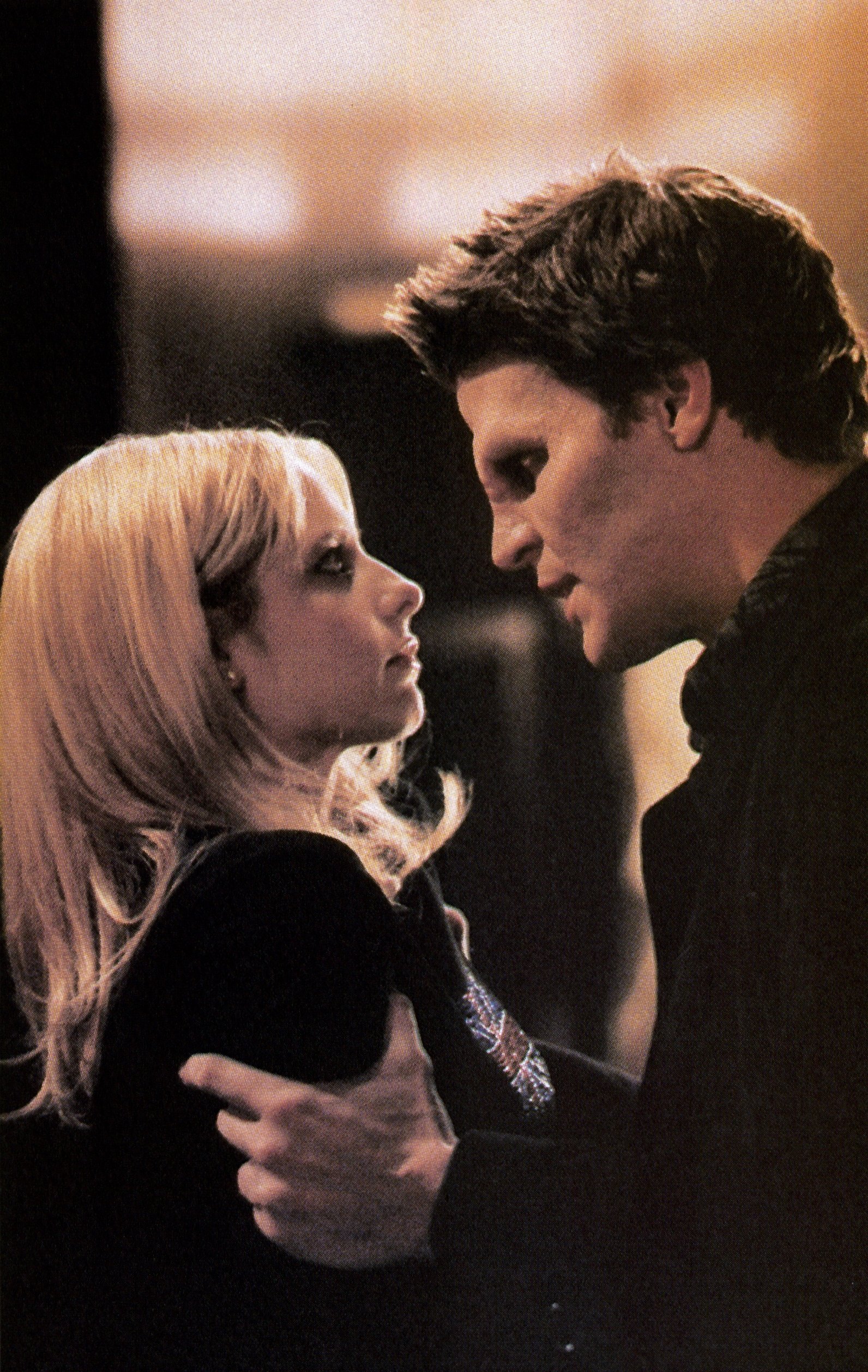
Time is a constant consideration for Gershman. “It’s one of episodic television’s worst enemies,” he says with a sigh. Buffy averages 24 setups a day on its eight-day shooting schedule; a second unit helps out when necessary. There’s no time for mistakes, and only slightly more for lighting.
Gershman has nothing but praise for his crew, some of whom, like key grip Tom Keefer, have worked with him for years. “Tom anticipates my every move with the lights. He knows what I want to light and, more importantly, what I don’t want to light. I’ve had a different gaffer each season. Fortunately, I’ve had three great ones: Larry Kaster during the first season, Dayton Nieter during the second, and Chris Strong this year. I’ve also had the help of two really great Steadicam operators: Andy Shuttleworth and Bill Brummond.”

Crew members offer invaluable suggestions. A night scene at the Los Angeles Zoo looked iffy after zoo officials forbade the rigging of big lights, which they feared would disturb the animals. However, best boy Gill Valle then suggested bouncing lights off giant (10' diameter) weather balloons. The idea worked perfectly, casting an even, ambient light that resembled a bright moonlit night. “The balloons are such a great tool,” Gershman enthuses. “We had an episode last year when we shot on a beach at night. Two people were supposed to walk along the shore — ostensibly lit by moonlight — but when shooting out into the water, there was only blackness. There was nowhere to hide lights — no cliffs or piers. To solve the problem, we attached a balloon to a long rope, tied the rope to concrete blocks and anchored the balloon in the water about 200 feet offshore. We then raised the balloon about 50 feet in the air and aimed extremely bright lamps — Maxi-Brutes and 6K HMI Pars — into it from the beach. The light source reflected onto the water, so when we shot the scene, it appeared as if the moon was shining on the water.”
A Lenny Arm and Technocrane are also used extensively on the show. One of the more unusual yet deceptively simple tools Gershman employs when shooting daylight exteriors is a large 4’ by 4'mirror that serves to cast a hot light on a specific object. He cites an episode ["The Pack"] in which a group of students, including Xander (Nicholas Brendon), are put into a trance by magical hyenas at the zoo. The kids are transformed into a dangerous pack, and eventually eat the school principal. “We placed the 4' by 4' mirror on the ground,” explains Gershman, “which we had reflecting the sun. The mirror focuses a sharp beam of light, which threw a very hard light onto the characters.
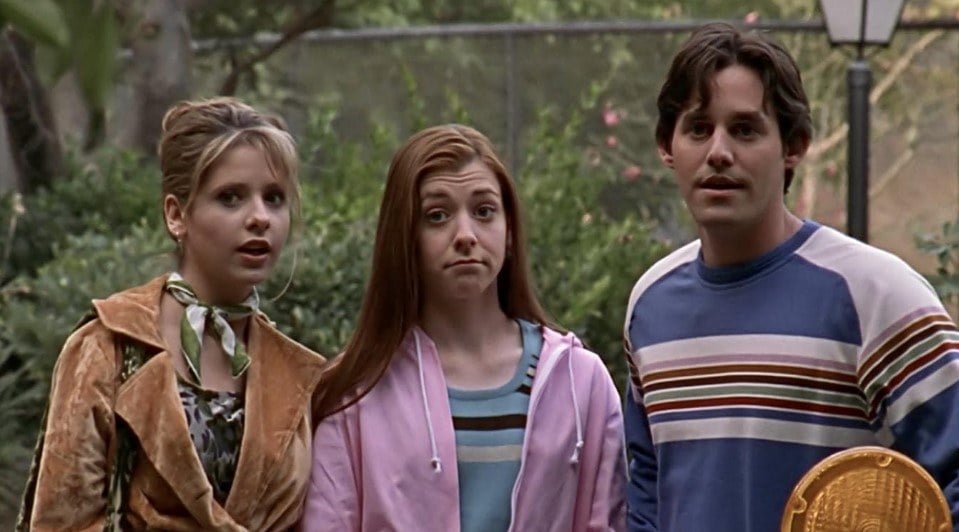
For a subsequent sequence, Gershman switched to slow motion and a long lens to isolate the teenagers as they moved up some steps. “At that point in the show, they were very definitely a pack,” Gershman notes. “The hard light falling on Xander was from the mirror again, as were the highlights on a balcony in the background. I wanted highlights so the scene wouldn’t be flat, but I couldn’t do it with lamps; I wouldn’t have had time to set them up.”
Gershman supervises the final transfer of every show, an unusual luxury in series TV. This advantage is possible because Digital Magic is directly across the street from the soundstages where Buffy is shot. “It’s an incredibly valuable tool for a cameraman to know what can be done in the telecine bay,” he emphasizes. “While we’re shooting, I may think ‘way too much color,’ but I know I can desaturate when I go into the telecine bay. Or maybe I’ll go the other way and add color. Michael Schneider is a great colorist.”
Although Gershman has thoroughly enjoyed his three years on the show, he actually turned down the job when it was first offered. “At first the show didn’t really appeal to me. It was going to be shot on 16mm and was about a vampire slayer named Buffy! I wasn’t sure that was the kind of material I wanted to do, but the producer kept calling and saying, ‘If you meet Joss, you’ll want to do the show.’ And he was right.”
Gershman went on to shoot 82 episodes of Buffy, also directing 10 more. He died in 2018 at the age of 73.

If you enjoy archival and retrospective articles on classic and influential films, you'll find more AC historical coverage here.






